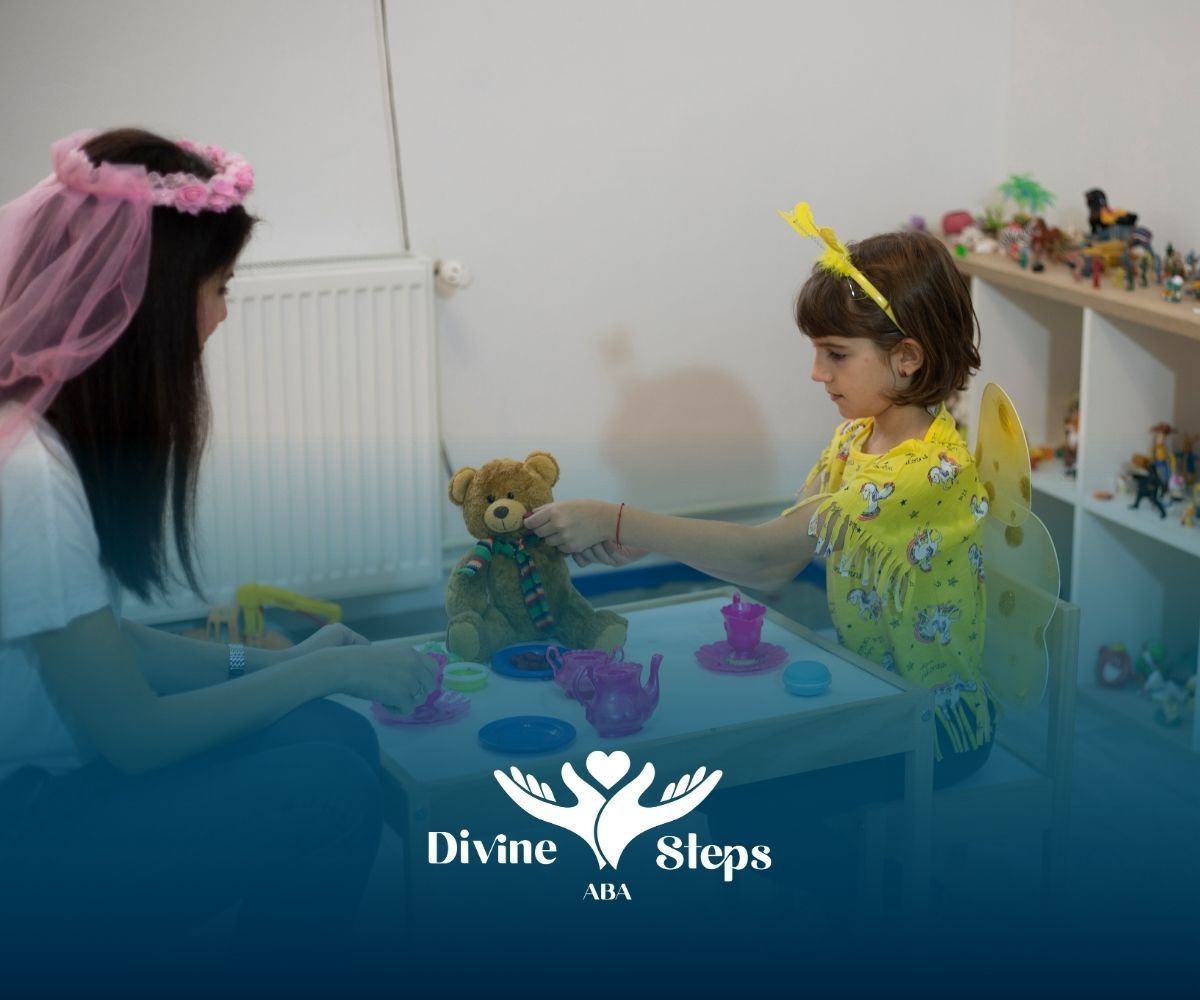Website by CWS
What Age is Too Late for ABA Therapy? Insights and Facts
Key Highlights
- Applied Behavior Analysis (ABA) therapy is flexible, catering to age groups ranging from infants to adults.
- Early intervention, ideally between ages 2 and 4, is considered optimal for foundational skill-building.
- Quality of life improvements through ABA extend across all developmental stages, boosting social skills and communication.
- There is no strict maximum age limit; older individuals can still gain from tailored ABA sessions.
- Success stories highlight significant benefits across different age groups, underscoring ABA’s adaptability and effectiveness.
- ABA programs are tailored to individual needs, ensuring progress and meaningful behavioral interventions at any life stage.
Many families and individuals believe ABA therapy only works for toddlers. But that’s a myth. While early intervention is ideal, ABA programs are effective for teens, adults, and even seniors when customized to their needs.
A mother once called our clinic worried her 10-year-old son had “missed the window.” But after we started in-home ABA therapy, he quickly began improving his classroom behavior, learned how to express himself more clearly, and grew more confident in group settings.
Today, she calls ABA their “second chance.”
Age Ranges Commonly Associated with ABA Therapy
How ABA Helps Across the Lifespan
ABA therapy is widely known for its success with young children on the autism spectrum, but it's valuable at every age.
Children between ages 2 and 6 often show the most rapid gains in language and social interaction. This is why early childhood is considered an ideal time to begin.
That said, older children, teens, and adults also benefit significantly. Their therapy goals might look different—focusing on school success, social independence, or vocational training—but the principles of ABA remain effective.
Typical Ages for Starting ABA
When Does ABA Therapy Usually Begin?
ABA typically starts after an autism evaluation and diagnosis, which can happen as early as 18–24 months.
Many children begin therapy between ages 2 and 4, where the focus is on core skills like communication, play, and imitation. This period is a powerful window for developmental growth.
What About Infants or Older Children?
Some early programs, like the Early Start Denver Model (ESDM), introduce ABA principles for infants as young as 6 months. For older kids who start after age 6, therapy shifts toward school readiness, self-care, and behavioral regulation.
These adjustments help ensure ABA remains helpful and relevant—no matter when it begins.
Benefits of Early Diagnosis and Intervention
Why Early ABA Makes a Difference
Early intervention for autism often leads to faster skill development. Children’s brains are more flexible between ages 2 and 5, which means therapy can more easily shape communication, behavior, and social interaction.
What the Research Says
Studies show that children receiving 20–40 hours of ABA per week show improvements in adaptive functioning and communication. The earlier ABA starts, the more time a child has to develop foundational skills that carry into adolescence and adulthood.
Is There a Maximum Age Limit for ABA Therapy?
No Age is “Too Late”
There’s no upper age limit for ABA therapy. While early intervention is ideal, therapy remains useful well into adolescence and adulthood. The key is customizing the approach based on where the person is developmentally and what they want to achieve.
For older individuals, therapy might center on building independence, managing anxiety, learning job skills, or improving social interactions.
These goals are just as important as early childhood milestones—and just as achievable.
What Research Says About ABA and Age
How Age Impacts ABA Outcomes
While age can shape therapy goals, it doesn’t limit effectiveness. ABA is backed by research across all age groups.
Here’s a breakdown of common focus areas by age:
| Age Group | Focus Areas | Key Benefits |
|---|---|---|
| Infants (6+ mo) | Early communication, social skills | Encourages milestones like eye contact, vocalization |
| Toddlers (2–5) | Play, language, daily routines | Strong gains in communication and behavior |
| Older kids (6–12) | Academic, behavior, friendships | Better classroom behavior, social development |
| Teens & Adults | Life skills, independence | Vocational readiness, greater daily autonomy |
ABA isn’t one-size-fits-all—it adjusts with age and remains effective throughout life.
Success Stories from Different Age Groups
Real Outcomes from ABA
Across all ages, ABA therapy’s success stories help people meet meaningful goals. Children benefit from improved communication.
School-aged kids develop coping skills and reduce problem behaviors. Teens and adults gain independence, learn job skills, and manage real-world challenges more confidently.
These stories underscore a key truth: therapy works when it’s matched to the person—not the age.
How ABA Remains Effective at Every Life Stage
Adapting ABA to Different Needs
ABA therapy changes with the learner. Younger children might focus on imitation and play, while adults may work on managing anxiety, navigating social situations, or completing job tasks.
The strength of ABA is in its flexibility. It evolves with the person, ensuring therapy stays useful and impactful—no matter where they are in life.
ABA for Children and Adolescents
What Younger Learners Gain
Early ABA helps children build communication, motor, and social skills. Structured programs like Early Intensive Behavioral Intervention (EIBI) offer a consistent routine to encourage learning through repetition and positive reinforcement.
How Goals Shift as Children Grow
By ages 7–12, therapy may focus more on school performance, managing friendships, and transitioning to greater independence. For teens, support expands to include career exploration and functional life skills.
ABA for Teens and Adults
Meeting New Challenges
ABA for older learners supports independent living, vocational success, and emotional regulation.
Sessions might include budgeting, understanding social cues, or managing routines—skills that directly impact daily quality of life.
Building Lifelong Skills
Adults often benefit from ABA that targets confidence in social situations, job readiness, and mental wellness. Therapy becomes a tool not just for managing autism symptoms but for thriving in everyday environments.
Clearing Up Myths About Age and ABA Therapy
It's Never Too Late
One common myth is that ABA only works in early childhood. That’s not true. ABA can teach new behaviors and reduce harmful ones at any age. It’s about meeting a person where they are and building from there.
Older learners often find relief in having structure and support that helps them take meaningful steps toward independence and fulfillment.
What Affects ABA Success (Besides Age)
Important Factors That Shape Outcomes
Several things influence how well ABA works:
- Individual goals – Personalized plans are most effective.
- Consistency – 20–40 hours per week often brings the best results.
- Family involvement – Reinforcement at home accelerates progress.
- Behavior targets – Addressing the most impactful issues first helps people succeed faster.
Age is just one piece of the puzzle—what really matters is how therapy is delivered and supported.
Tailoring ABA to Every Learner
Why Customization Matters
The power of ABA comes from its adaptability. It doesn’t just teach behaviors—it builds the right skills for the right moment in life.
From early milestones to adult independence, therapy evolves to meet the needs of each individual.
Setting the Right Goals for Every Stage
Young children often work on communication, imitation, and play. Older kids focus on classroom skills and peer relationships. Adults may target managing anxiety, using transportation, or preparing for a job interview.
The right goals ensure progress feels meaningful and motivating.
Adjusting ABA Techniques for Older Individuals
How ABA Looks Different for Adults
With older learners, therapy focuses more on practical skills: meal planning, community engagement, or handling responsibilities at work. Role-play, modeling, and routine-building are common tools.
ABA also helps with emotional challenges—giving people strategies to manage stress, build relationships, and feel more in control of their lives.
Conclusion
There’s no such thing as “too late” when it comes to ABA therapy. Whether you’re just beginning in early childhood or seeking support in your teens or adult years, ABA offers flexible, effective interventions that can lead to meaningful progress.
The most successful ABA programs are personalized, consistent, and focused on real-life goals. If you’re considering therapy for a loved one yourself or someone you care about, know that growth is always possible.
Reach out to Divine Steps ABA for personalized ABA therapy services in Maryland.
Frequently Asked Questions
Is it ever too late to start ABA therapy?
No. ABA works well for all age groups, including adults. The focus simply shifts to meet age-appropriate goals.
Can adults benefit from ABA therapy?
Absolutely. Adults often use ABA to improve daily routines, job readiness, and social interaction. It supports greater independence and confidence.
How does age affect ABA outcomes?
Younger brains are more flexible, so early intervention is ideal—but ABA is still highly effective at later stages when tailored to individual needs.
Sources:
- https://www.nichd.nih.gov/health/topics/autism/conditioninfo/treatments/early-intervention
- https://www.autismspeaks.org/science-news/early-intervention-toddlers-autism-highly-effective-study-finds
- https://www.cdc.gov/autism/treatment/accessing-services.html
- https://www.thetransmitter.org/spectrum/autism-intervention-before-age-2-may-aid-social-language-skills/
- https://pmc.ncbi.nlm.nih.gov/articles/PMC9923898/




